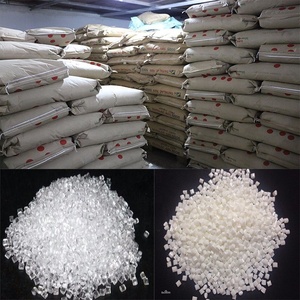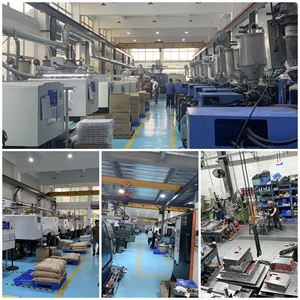
All categories
Featured selections
Trade Assurance
Buyer Central
Help Center
Get the app
Become a supplier

(1445 products available)



























A mould temperature controller for injection machine aims to maintain consistent and precise temperature control in injection moulds. The temperature controller for injection moulding comes in various types that suit different application requirements. Here are the top common types of temperature controllers for injection moulds.
Type T Temperature Controller
The Type T temperature controller is one of the most common temperature controllers designed to control the temperature of heated moulds and platens. It uses a thermocouple sensor as an input to a microprocessor-based controller for better accuracy and reliability. The thermocouple senses the temperature of the mould and sends a signal to the controller. Then, the controller processes the signal in milliseconds and determines the required heating or cooling to maintain the desired temperature setpoint. Finally, it sends a control signal to the heating or cooling device. Type T temperature controllers come in different models to offer specific features and functionality, such as auto-tuning, control algorithms, and alarm functions for safety.
Water Cooled Temperature Controller
A water-cooled temperature controller regulates mould temperature using water circulation. Typically, it has a chiller or heat exchanger that removes heat from the water, lowering the temperature. A pump then circulates the cooled water through the mould, absorbing heat and maintaining a constant temperature. Water-cooled controllers can cool the mould more quickly than air-cooled controllers, improving the temperature uniformity and reducing cycle time. They are ideal for high-volume, high-speed injection moulding applications.
Air Mould Temperature Controller
An air-cooled temperature controller uses airflow to regulate the temperature. It typically has a heat exchanger that transfers heat from the fluid inside the hose to the air. Then, a fan blows the processed air to cool down the mould. Air-cooled controllers are easier to install and maintain than water-cooled controllers because they do not require a water treatment system. They are ideal for applications where water is not readily available, but they may not cool the mould as quickly or evenly as water-cooled controllers.
Low-cost mould temperature controllers work on the principle of electrical heating. The heater is always in current contact with the fluid. Heating fluids usually feature either piping or an electrical jacket that a fluid passes through. The following specifications reveal more details about its plumbing attachments and fittings.
Proper maintenance of a mould temperature controller prolongs equipment lifespan, prevents downtime, and ensures consistent temperature control during the injection moulding process. Regular inspection of the temperature controller helps track any arising issues and ensures prompt rectification. The following routine maintenance tips, along with the service manuals, should ensure the machine remains in excellent condition.
The injection temperature controller is versatile and can be used in industries where injection moulding is applicable. Here are some areas where it can be used:
Plastic Industry
The plastic industry comprises anything that has to do with plastics — from raw materials to final products. In this industry, the mould temperature controller is used to enhance product quality. This includes reducing the defects and improving the overall quality of plastic products.
Automotive Industry
The automotive industry refers to the sector that manufactures vehicles and car parts. This area uses the mould temperature controller to ensure precise temperature control when moulding automotive components.
Such components include interior and exterior trims, dashboards, bumpers, and lighting housings, to name a few. Mould temperature control helps maintain consistent dimensions and reliable fit for automotive parts.
Medical Field
Medical devices are made with high-precision, high-tech plastic materials. Examples include housings, syringes, connectors, and surgical instruments. The controller is responsible for maintaining the temperature of the moulding for these devices.
Using a mould temperature controller improves the mechanical and optical properties of medical devices. It also helps the production of devices with complex geometries and ensures that production meets strict regulations and standards.
Consumer Electronics
Consumer electronics includes daily personal use tools that make living easy. Things like mobile phones, tablets, and smartwatches all use mould controllers when the components are being made.
A precise temperature is crucial for achieving the intricate details and thin walls typical of consumer electronic devices.
Construction Industry
When building or constructing structures, materials with temperature control help with the consistency of product quality. In the construction industry, temperature controllers are used to mould construction components like pipes, fittings, and structural elements.
The durability and dimensional accuracy of construction materials are incredibly essential — especially those under pressure.
Food Packaging
Food packaging refers to all the materials used to contain food. This often establishes a protective barrier between the packaging and the contents. With a mould temperature controller, packers can ensure temperature consistency and rapid temperature control, which are vital to producing food packaging materials with reliable barrier properties.
Examples include bottles, containers, and protective trays made of plastics.
Aerospace and Defence
Mould temperature controllers help enhance the quality of the engineered materials that are often used in the aerospace and defence industries.
These include materials like carbon fibre and polycarbonate, which are known for their strength and clarity. The precision control offered by the mould controller ensures high consistency and reliability for all moulded components.
Textile Industry
In the textile industry, the mould temperature controller is used to produce textile machinery parts with high precision and durability, such as pump housings, gear boxes, and shuttles.
It's important that these parts are highly resistant to wear.
When choosing a mould temperature controller for an injection machine, several factors should be considered to ensure the proper functioning of the equipment and the quality of the injected parts.
Q1. How do temperature controllers work?
A1. Mould temperature controllers regulate temperature using electrical sensors. They then send a signal to the heater or cooler to activate it until the desired temperature is achieved.
Q2. Why is temperature control important in injection moulding?
A2. Maintaining the proper temperature during injection moulding is crucial for consistent product quality. Furthermore, effective temperature control can shorten cycle times and reduce energy consumption.
Q3. What are the different types of temperature controllers?
A3. The different types of temperature controllers include on/off controllers, proportional-integral-derivative (PID) controllers, programmable controllers and pressure controllers among others.
Q4. What is the mould temperature control?
A4. Mould temperature control involves adjusting the temperature of moulds used in various manufacturing processes to improve product quality and production efficiency.
Q5. What are the benefits of the temperature controller?
A5. The temperature controller benefits include enhanced product quality, improved mechanical efficiency, energy conservation, reduced production costs and extended equipment lifespan among others.